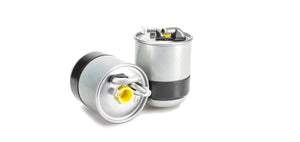The way that fuel is delivered to an engine’s combustion chambers has changed hugely in recent years. It used to arrive via something called a carburetor, a relatively simple but inefficient and temperamental component.
In the 1990s this was rapidly replaced by fuel injection, a system that could satisfy the tough, new emissions standards introduced at that time, while boosting the engine’s performance.
In its early days fuel injection was expensive and associated with premium vehicles but now every car has fuel injection.
It’s generally reliable but it still pays to know how the system works, where it is and how to tell when it’s playing up. Here we answer those questions and more…
What is a fuel injection system?
It’s tempting to say it’s exactly what the name implies, except that there are different types of system including direct and indirect.
Ultimately they do the same thing, though: inject a precisely calibrated fuel spray into or close to the engine’s combustion chambers, exactly when it’s needed. Gasoline and diesel engines both use fuel injection systems.
Why does an engine need one?
Without some kind of fuel delivery system, be it a carburetor or injection system, the engine wouldn't work.
The beauty of a fuel injection system is that it is much more controllable than an old-fashioned carburetor. It’s partly why modern engines are so much more efficient (clean, economical and powerful) than they once were.
What does the injection system look like?
You’d have to strip away a lot of the engine to see it because it’s composed of quite a few separate components:
- Fuel supply module containing things such as a high-pressure electric fuel pump and fuel filter.
- Intake air adjuster to make sure there’s exactly the right quantity of air for the engine.
- Electronic control unit and sensors to ensure the system injects precisely the right quantity of fuel into the intake air stream.
- Fuel injectors mounted on a fuel supply rail to deliver the fuel to the engine.
How does the injection system work?
The fuel supply module sends fuel under pressure to the injectors, one per cylinder. The quantity of fuel that reaches the injector is precisely controlled by an ECU which considers air temperature, throttle position, engine speed, engine torque and exhaust data gathered from sensors in and around the engine to regulate the supply at each intake stroke.
Air arrives via the intake manifold and is drawn into the engine past the intake valve, or valves.
However, how the fuel and air are introduced to, and mixed with, each other differs depending on what fuel injection system is being used.
Most gasoline engines use what is called an indirect fuel injection system where the fuel is injected into the intake manifold, the arrangement of pipes that channel the incoming air to the engine. Here both fuel and air are mixed before being drawn into the combustion chamber.
In a direct fuel injection system, such as diesel engines use and, increasingly, modern gasoline engines, the fuel is sprayed directly into the combustion chamber under extremely high pressure and directly into the incoming air stream.
This is a much more efficient technique than indirect fuel injection that boosts power and economy, and reduces emissions.
Early injection systems used to be mechanically operated but modern systems are entirely electronic, and more reliable and efficient as a result.

Why does an injector fail?
An injector is a precision instrument that operates in extreme conditions and which must deliver fuel, under high pressure, through a tiny nozzle, or nozzles, into the intake manifold or directly into the combustion chamber.
Consider this: over the course of 12,000 miles an injector will operate 18 million times. It’s no surprise, then, that it can fail.
That said, often its not the injector itself that fails but the quality of the fuel entering it that does the damage.
It may be contaminated either because it’s low grade or because the fuel filter is dirty. Additives in the fuel can also form deposits on the injector.
How do you diagnose a faulty injector?
- A worn injector may cause misfiring, uneven idling, pre-ignition, when the fuel and air combust before the spark plug fires, or detonation when excess fuel remaining after combustion ignites. This can damage the engine so shouldn't be ignored.
- A leaky injector that has an internal valve that’s sticking may flood and cause starting issues. If you can smell fuel, it may be coming from the injector.
- Because a faulty injector will cause uneven combustion temperatures, use a laser thermometer to check the temperature of the exhaust manifold. A healthy reading should be around 230deg C but a failing injector that’s delivering too much fuel may record 320deg C.
- An increase in fuel consumption may be because the injector is no longer supplying a fine spray but instead, large droplets of fuel that won't atomize properly in the intake manifold or combustion chamber. Again, suspect a sticking valve.
- Remove the injector (be careful – fuel will escape, so disconnect the battery and work in a well ventilated area) and inspect it for cracks or leaks. You won't be able to do much about them but at least you’ll have a definitive explanation.
- Check each injector’s electrical resistance using a multimeter. A faulty injector will mean the remaining injectors are receiving too much electrical current, which the multimeter will register.
- Use an engine stethoscope to listen for noises from the injector. If you can't hear a regular ticking sound, it’s likely to be failing.
How do you repair an injector?
You can't really; instead, if the running issues don’t seem to be too severe, try changing the fuel filter or purge the fuel system to release any debris. Also, add injector cleaning fluid to the fuel tank.






















